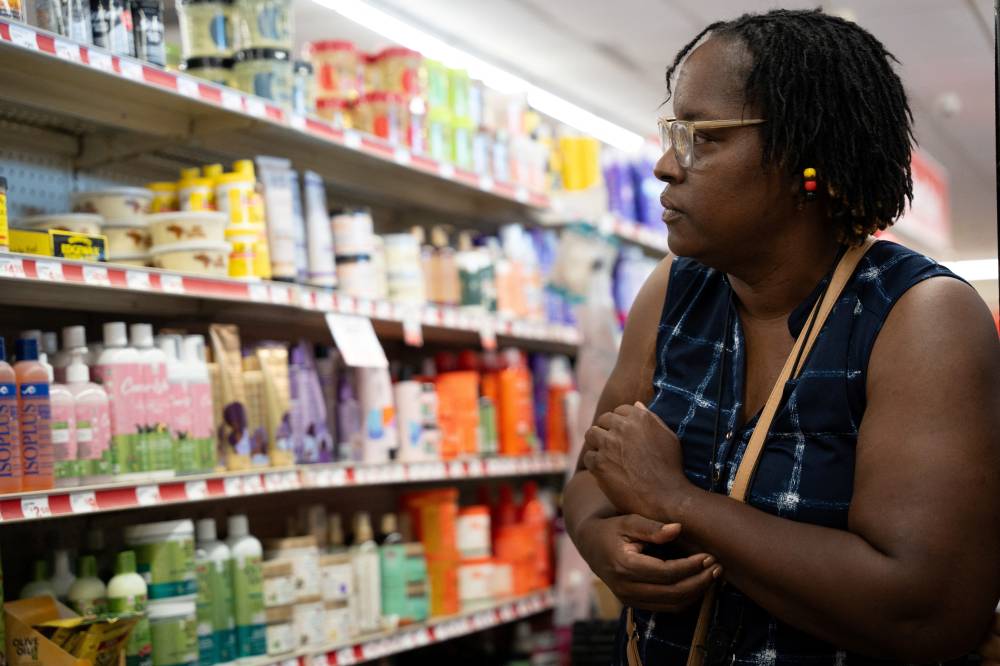When the dollar store closes, many US families lose a lifeline

First of two parts
NASHVILLE—Nearly every day, Latrina Begley, 37, of Nashville, or one of her six children, shopped at the Family Dollar down the hill from their home, using federal food benefits to buy Hot Pockets or frozen pizza, and staples like milk.
But Family Dollar shut down the location earlier this year, as part of closures of nearly 1,000 stores out of its 8,200, a move intended to boost profits.
Cuts last year to the largest US anti-hunger safety net, the Supplemental Nutrition Assistance Program (SNAP), previously called food stamps, after the end of the Covid pandemic hit the retailer’s sales in the months before the closures.

Purchases made with SNAP represent $11 out of every $100 spent at the bargain chain, according to retail research firm HSA Consulting.
The closure leaves Begley with only a few convenience stores within one mile of the former Family Dollar, expensive options she can’t afford. The U.S. Department of Agriculture (USDA) has identified her neighborhood, in a historically Black part of Nashville, as low-income and with low-access to healthy, affordable food, an area formerly called a food desert.

“It’s harder for us and me,” said Begley, who works at the city’s housing agency. “I have to stop after work, or else we don’t have anything for the night.”
Begley said she relied on her mother to help with childcare and to make ends meet, and, if she did not have her, would turn to food pantries.
Most of the nearly 1,000 stores Family Dollar is closing are in areas where it had competition from other low-cost food retailers like Walmart, according to a Reuters analysis of data from the retailer locator for SNAP.

Family Dollar’s parent company, Dollar Tree, is not sharing the locations of the closed stores, but Reuters was able to find and analyze 648 shuttered Family Dollars using the locator.
Fifteen of them are in urban neighborhoods like Begley’s with high poverty rates and only convenience shops and drug stores within a one-mile drive, a widely used distance for measuring consumers’ access to food.

The shut downs come after executives at the retailer’s parent company late last year linked softening sales to reductions in food benefits, saying “the month-by-month deceleration” in sales at Family Dollar “matched the progressive reductions in national (food benefit) payments.”
Poor communities
The closings, after a sustained period of high inflation, will worsen access to groceries in poor communities like Begley’s that rely on federal food benefits and dollar stores, policy experts, professors, community leaders and healthcare providers told Reuters.
Food prices at drug and convenience stores are often significantly higher than at dollar stores like Family Dollar, which offer a wider variety of cheaper private label items and have leverage with suppliers because of their scale.

The chain has touted that its stores serve low-income people for “fill-in” shopping trips for necessities between visits to supercenters or supermarkets. But shoppers using food benefits at dollar stores depend on them for meals and pantry staples more than shoppers who use all forms of payment, buying cereal, milk, bread, soup and frozen dinners more often on visits to the stores, according to data for the year ended August 11 from research firm Circana shared exclusively with Reuters.

A spokesperson for Dollar Tree, Family Dollar’s parent company, said that the retailer’s focus is on “identifying favorable opportunities to position Family Dollar for long-term success with continued investment in new and existing stores.”
The Chesapeake, Virginia-based company, which reported $4.6 billion in gross profit in the six months ended August 3, is also looking to potentially sell or spin-off Family Dollar, it has said.

The spokesperson added that customers can use their food benefits on delivery app Instacart to order from Family Dollar.
However, buying groceries at Family Dollar through Instacart is often more expensive than in stores, and customers cannot use the food aid to pay for delivery and service fees.
“In these neighborhoods, it’s removing a place where people are shopping, where they’ve been buying more food than ever before,” said Sean Cash, an economist and professor at the Friedman School of Nutrition Science and Policy at Tufts University.
“This is going to make food access harder.”
Continued tomorrow
Reuters, the news and media division of Thomson Reuters, is the world’s largest multimedia news provider, reaching billions of people worldwide every day. Reuters provides business, financial, national and international news to professionals via desktop terminals, the world's media organizations, industry events and directly to consumers.

















